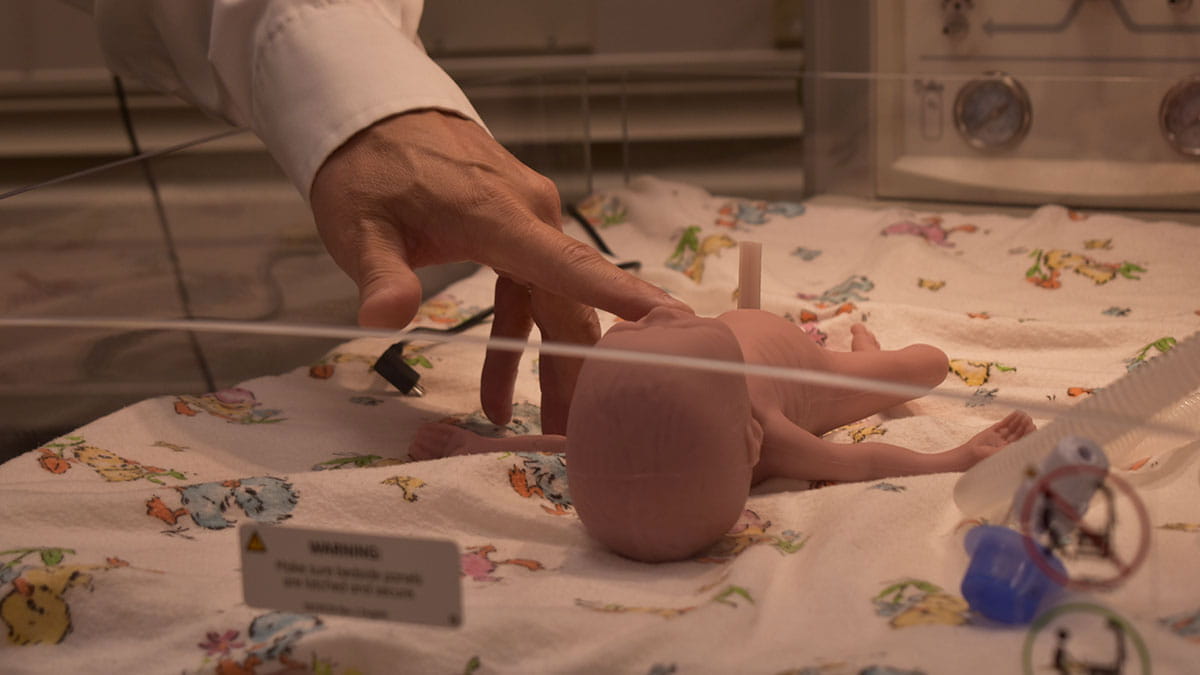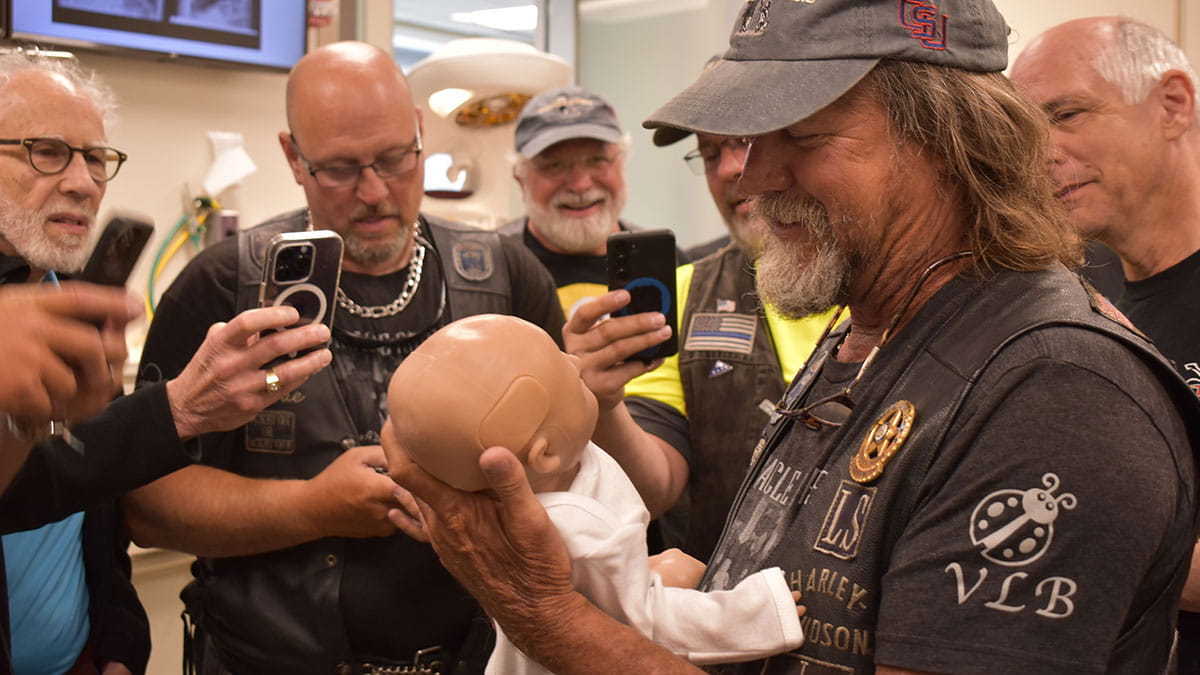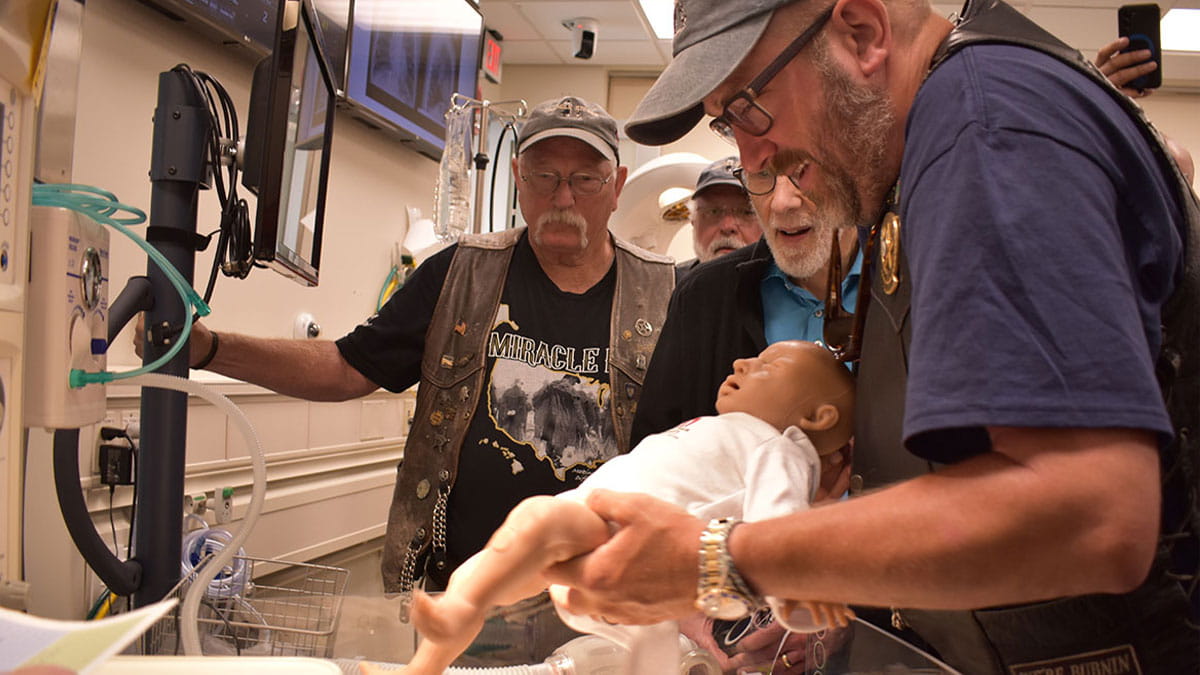Miracle riders: making a difference in children’s lives
In May, a group of men who combine their love of motorcycle riding and making a difference in the lives of children called the Miracle Riders, made a stop at The Ohio State University College of Medicine’s Clinical Skills Education and Assessment Center (CSEAC). There, lead medical simulationist Scott Winfield showed them how our learners, residents, physicians and nurses are trained to use their critical thinking skills in real time.
“This is part of their training. Simulation allows them to learn in situations that are not ordinary or usual,” Winfield says. “And they have to quickly figure out what to do.”
The Miracle Riders come from all walks of life and professional backgrounds, serving as law enforcement officers, barbers, medical personnel and even retirees. Every year they embark on grueling trips spanning thousands of miles across the country. This particular year’s journey is one of the most ambitious yet.
“We’re riding coast to coast through every Columbus across the country,” says Miracle Riders founder Scott Ressmeyer. “We’re connecting with people and raising awareness and funds for pediatric programs.”
In the infant and premature infant simulations at CSEAC, the group got the chance to see up close what’s involved in making sure infants get the access and treatment they need. Winfield used his hand to illustrate the small scale of a manikin of a premature infant.  “As you can see, a tiny baby has really tiny vessels,” Winfield says. “Knowing how to intubate an infant this size prevents one death at a time.”
“As you can see, a tiny baby has really tiny vessels,” Winfield says. “Knowing how to intubate an infant this size prevents one death at a time.”
Ressmeyer shared that the riders participating in the 15th Annual Charity Ride are riding to do just that.  “We’ve raised $250,000 to help support a new neonatal intensive care unit (NICU) simulation lab for Columbus State University nursing students,” Ressmeyer says. “We’re committed to helping make life changing and family-changing differences.”
“We’ve raised $250,000 to help support a new neonatal intensive care unit (NICU) simulation lab for Columbus State University nursing students,” Ressmeyer says. “We’re committed to helping make life changing and family-changing differences.”
The visit to Ohio’s State’s CSEAC’s state-of-the-art facilities educates the group on best practices to provide invaluable training opportunities for aspiring nurses and physicians in a controlled and safe environment. From caring for preemie babies – their current fundraising venture – to managing labor and delivery complications, simulation labs like CSEAC play a vital role in their drive to keep raising fund to ensure the next generations of health care providers are equipped with the latest technology. To date, the Miracle riders have raised millions of dollars for programs and services benefiting local children.
Winfield ended the tour by sharing that the 10 members of the CSEAC staff lean on their shared educational, medical and technical backgrounds to inform how they continue to ensure robust training and maintenance of the simulation training systems.
“This is how we learn to lead with quality and safety,” Winfield says. “Medical simulation centers are vital component of the medical learning environment”.
This is a great example of how the College of Medicine continues to transform health through inclusive and innovative education, discovery and care.

